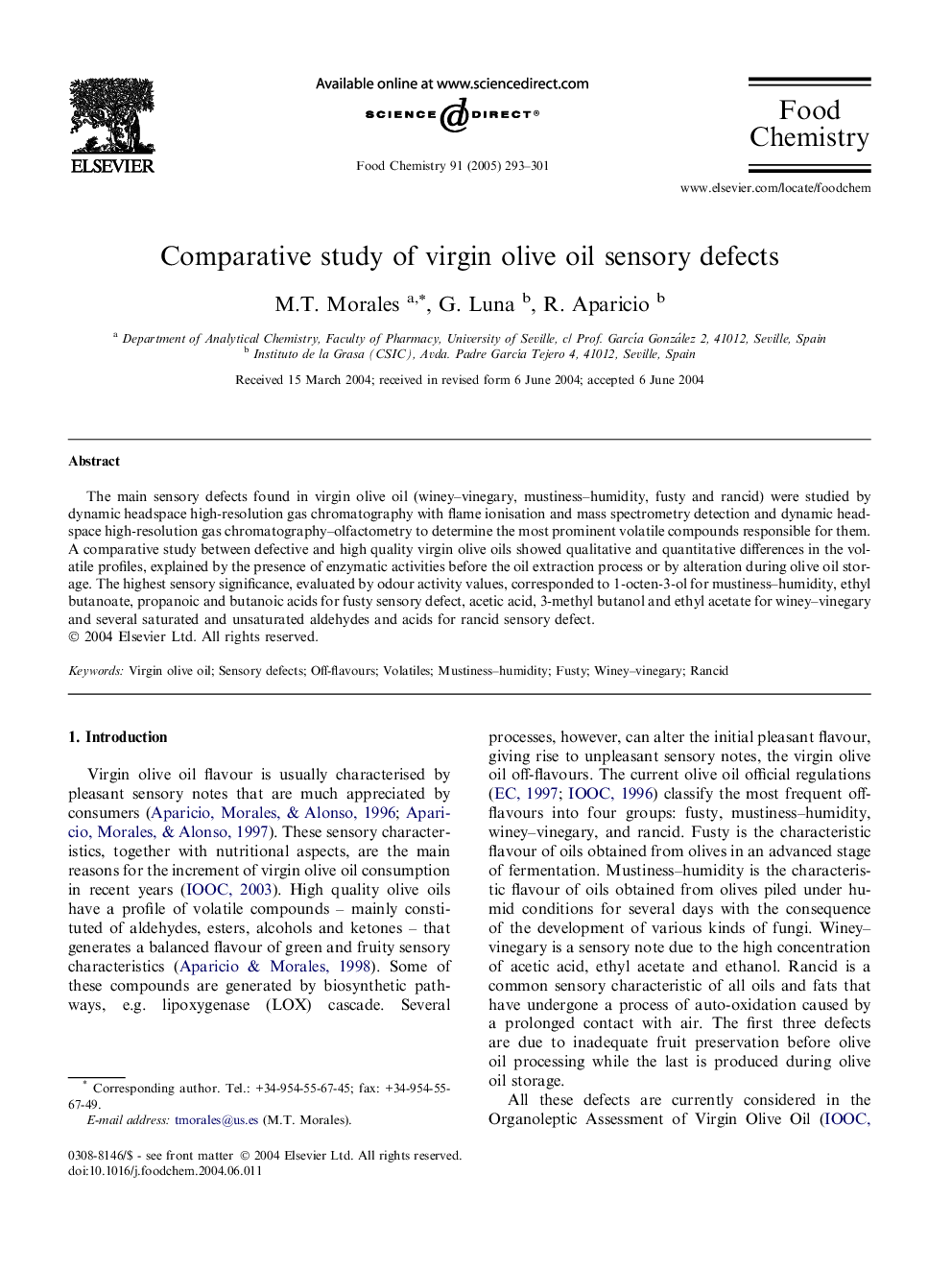| Article ID | Journal | Published Year | Pages | File Type |
|---|---|---|---|---|
| 10544495 | Food Chemistry | 2005 | 9 Pages |
Abstract
The main sensory defects found in virgin olive oil (winey-vinegary, mustiness-humidity, fusty and rancid) were studied by dynamic headspace high-resolution gas chromatography with flame ionisation and mass spectrometry detection and dynamic headspace high-resolution gas chromatography-olfactometry to determine the most prominent volatile compounds responsible for them. A comparative study between defective and high quality virgin olive oils showed qualitative and quantitative differences in the volatile profiles, explained by the presence of enzymatic activities before the oil extraction process or by alteration during olive oil storage. The highest sensory significance, evaluated by odour activity values, corresponded to 1-octen-3-ol for mustiness-humidity, ethyl butanoate, propanoic and butanoic acids for fusty sensory defect, acetic acid, 3-methyl butanol and ethyl acetate for winey-vinegary and several saturated and unsaturated aldehydes and acids for rancid sensory defect.
Related Topics
Physical Sciences and Engineering
Chemistry
Analytical Chemistry
Authors
M.T. Morales, G. Luna, R. Aparicio,
